Restoring Historical Walls: A Guide to Preserving Architectural Heritage
Restoring historical walls is a crucial process in preserving architectural heritage, ensuring that the stories, craftsmanship, and cultural significance of the past remain intact. Over time, exposure to weather, pollution, and structural weaknesses can cause deterioration, making restoration essential to prevent irreversible damage. Whether you are restoring a centuries-old stone wall, a vintage brick structure, or an ornamental plaster surface, the process requires careful planning, skilled craftsmanship, and historically appropriate materials.
At RenovationDay.com, we specialize in historic wall restoration, helping homeowners and property managers revive their timeless architectural treasures. Our expert team in Atlanta, Georgia, understands the delicate balance between preserving authenticity and enhancing structural integrity.
Why Restoring Historical Walls is Important
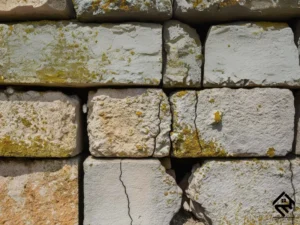
1. Preserving Cultural Heritage
Historical walls are more than just structural elements; they are pieces of history that reflect the architectural style, craftsmanship, and cultural influences of the period in which they were built. Restoration helps ensure that future generations can appreciate and learn from these historical landmarks.
2. Preventing Further Deterioration
Over time, walls made from materials such as brick, stone, wood, or plaster can deteriorate due to moisture, erosion, biological growth, and human interference. Without proper intervention, small cracks and weaknesses can expand, leading to costly repairs or even structural failure.
3. Enhancing Property Value
Restoring historical walls can increase the value of heritage properties, making them more attractive for residential or commercial use. Many historic buildings are in high demand, and maintaining their original charm can boost marketability while ensuring long-term stability.
4. Maintaining Structural Integrity
Many old walls were built with traditional materials and construction techniques that may not align with modern building codes. Restoration not only preserves the aesthetic appeal but also reinforces the structure, making it safer for continued use.
Common Challenges in Historical Wall Restoration
Restoring historical walls presents unique challenges, including:
1. Finding Matching Materials
Many old structures were built with locally sourced materials, which may no longer be available. Finding compatible stone, brick, or mortar is crucial to maintaining authenticity while ensuring long-term durability.
2. Dealing with Structural Weaknesses
Cracks, bulging walls, or weakened foundations can indicate deeper structural problems. Restoring a wall without addressing underlying stability issues may result in further damage.
3. Historical Accuracy vs. Modern Standards
Balancing historical accuracy with modern safety standards is a significant challenge. Some historical techniques may not meet current building regulations, requiring careful adaptation.
4. Environmental and Weather Conditions
Historical walls are often vulnerable to moisture penetration, temperature fluctuations, and biological growth (such as moss and mold). Restoration efforts must include protective measures to mitigate future environmental damage.
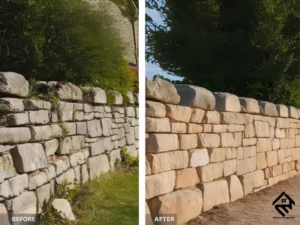
Techniques for Restoring Historical Walls
The restoration method depends on the type of wall, the materials used, and the extent of the damage. Below are some widely used techniques:
1. Repointing Masonry Walls
For brick or stone walls, repointing is a critical process that involves:
-
- Removing deteriorated mortar carefully to avoid damaging the surrounding materials.
- Matching the original mortar composition to maintain the wall’s appearance and integrity.
- Applying new mortar in layers to ensure proper bonding.
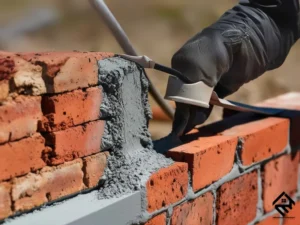
2. Brick Replacement and Restoration
Damaged bricks should be replaced with historically accurate materials. Techniques include:
-
- Sourcing reclaimed bricks that match the original structure.
- Using lime-based mortar instead of modern cement, which can be too rigid for historic buildings.
3. Plaster and Stucco Restoration
For walls covered with ornamental plaster or stucco, restoration includes:
-
- Replicating decorative elements using molds or hand-carved detailing.
- Applying historically appropriate stucco to restore the wall’s original finish.
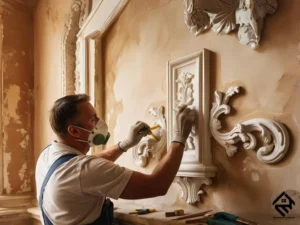
4. Timber and Wooden Wall Preservation
Wooden walls, especially in historic log cabins or timber-framed buildings, may suffer from rot or insect damage. Restoration methods include:
-
- Replacing rotted sections with matching wood grain and texture.
- Treating the wood with preservative coatings to prevent decay and infestation.
Want to Restore a Historic Wall? Let’s Get Started!
At RenovationDay.com, we bring history back to life. Whether you’re restoring a centuries-old stone facade, intricate plasterwork, or classic brick walls, our team in Atlanta, Georgia is here to help. Don’t let history fade away—contact us today to discuss your restoration project!
📞 Call us at 470-665-3590 or schedule a consultation online to bring your historic walls back to their original glory.
FAQs About Historical Wall Restoration
-
- How do I know if my historical wall needs restoration?
If you notice cracks, missing bricks or stones, crumbling mortar, or water damage, your wall likely needs restoration. It’s best to consult a professional to assess the extent of the damage.
- How do I know if my historical wall needs restoration?
2. How much does historical wall restoration cost?
The cost of historical wall restoration depends on factors like material, damage level, labor, and location.
Estimated Costs by Material:
-
- Brick Walls: Repointing $10-$25/sq. ft., full replacement $50-$100/sq. ft.
- Stone Walls: Restoration $40-$150/sq. ft. due to specialized craftsmanship.
- Plaster/Stucco Walls: Repairs $5,000-$20,000, depending on detail.
- Wooden Walls: Replacements and treatments $3,000-$15,000.
Damage Level & Restoration Costs:
-
- Minor Repairs: $500-$3,000 for small cracks or surface fixes.
- Moderate Restoration: $5,000-$20,000 for repointing or partial replacements.
- Extensive Reconstruction: $50,000+ for severe structural repairs.
Other Cost Factors:
-
- Labor: Skilled artisans charge $50-$150/hour.
- Permits & Accessibility: Extra $1,000-$5,000 for hard-to-reach walls or city approvals.
- Waterproofing & Protection: Adds $2,000-$10,000 to prevent future damage.
For an accurate estimate, consult experts at RenovationDay.com based on your project’s needs.
-
- Can modern materials be used in historical wall restoration?
It’s essential to use historically accurate materials whenever possible. Modern materials like cement-based mortar can damage old walls over time. Instead, experts recommend using lime-based mortar, reclaimed bricks, or original stone types to maintain authenticity. - How long does a historical wall restoration take?
The timeline varies based on the extent of the damage and the size of the wall. Small repairs may take a few days to a week, while full-scale restoration can last several weeks or even months. - Where can I see examples of restored historical walls?
Check out successful historical restoration projects on:
- Can modern materials be used in historical wall restoration?
-
- This YouTube Video showing a full masonry wall restoration.
- Instagram Post featuring before-and-after transformations of historical walls.
- Pinterest Board showcasing classic wall restoration techniques.
Final Thoughts
Restoring historical walls is both an art and a science, requiring careful attention to detail, expertise in traditional construction methods, and a commitment to preserving architectural heritage. Whether you’re working on a centuries-old stone wall, a vintage brick facade, or an ornate plaster structure, restoration ensures that history remains intact for future generations.
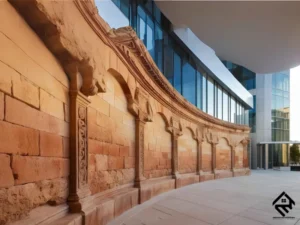
If you’re ready to breathe new life into your historic walls, RenovationDay.com is here to help. Contact us today to start your restoration project with experienced professionals who understand the value of historic preservation.




